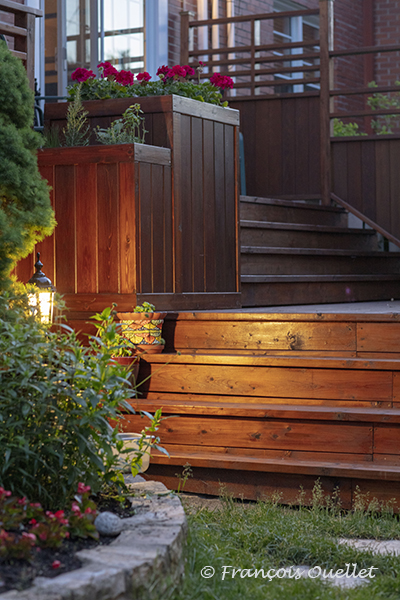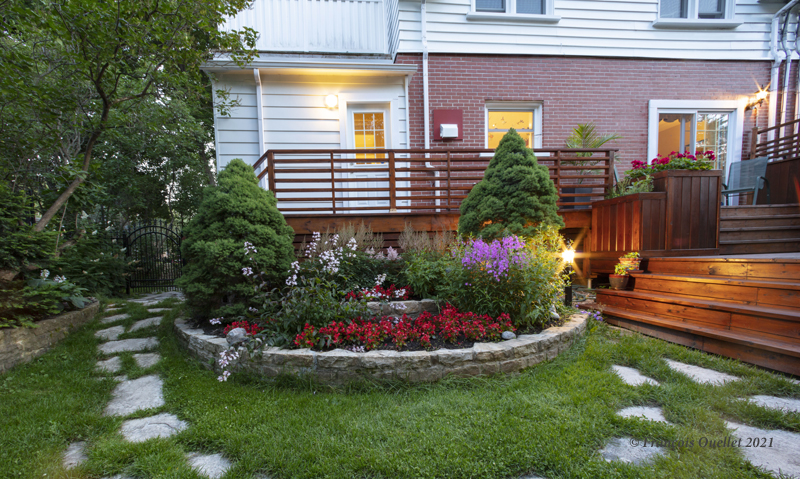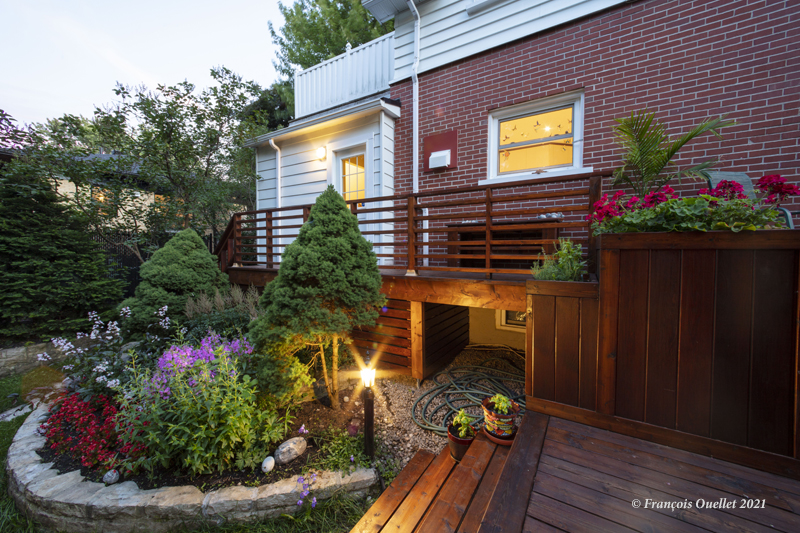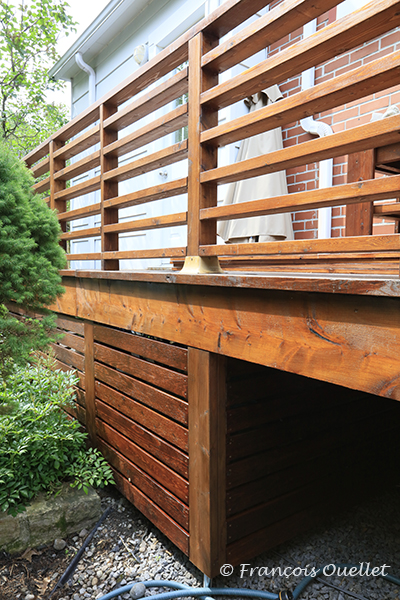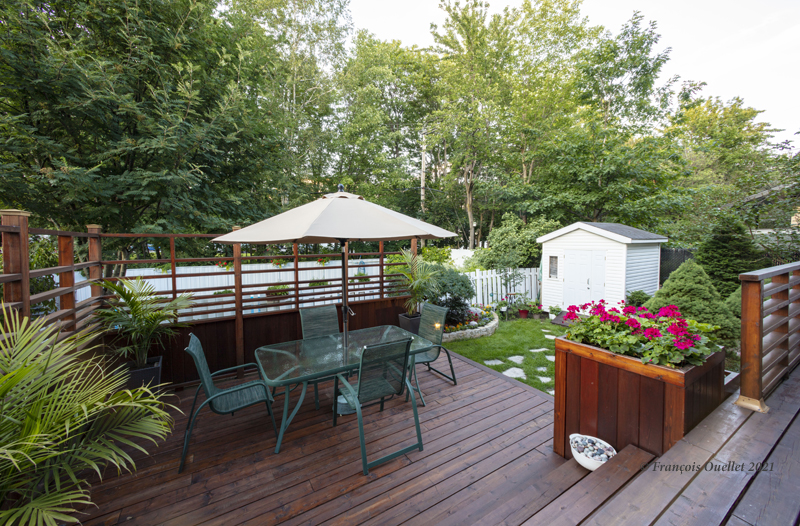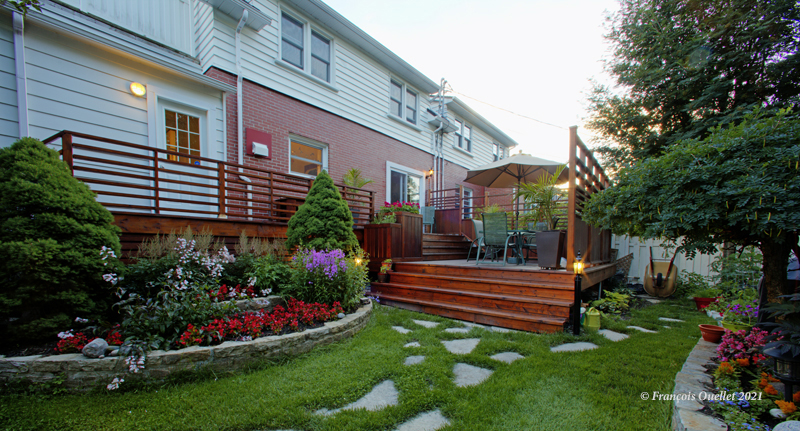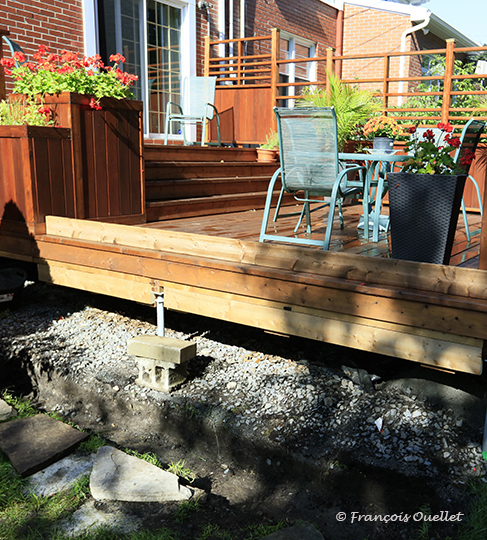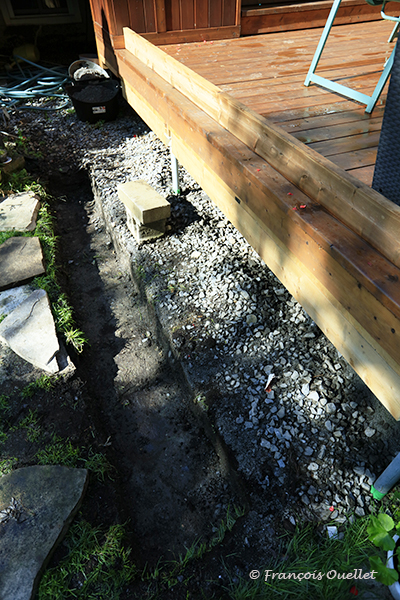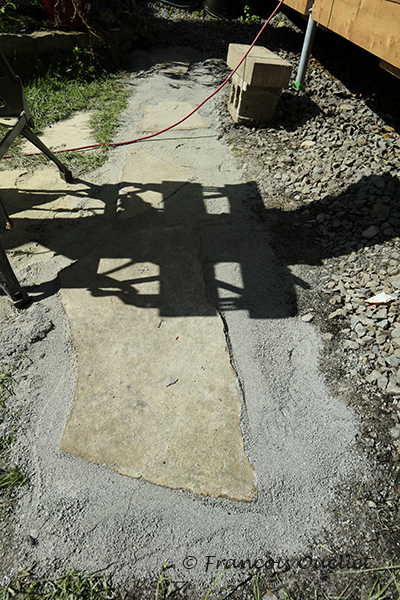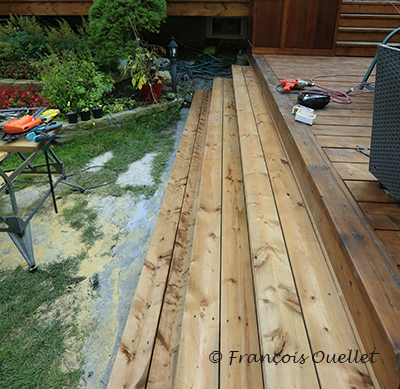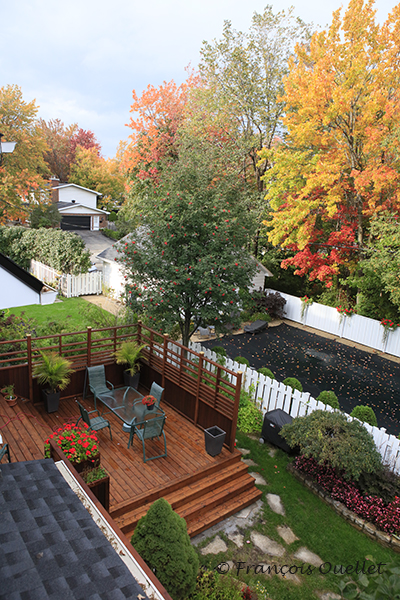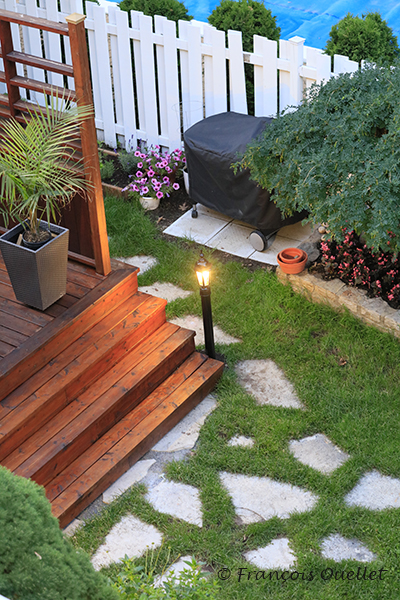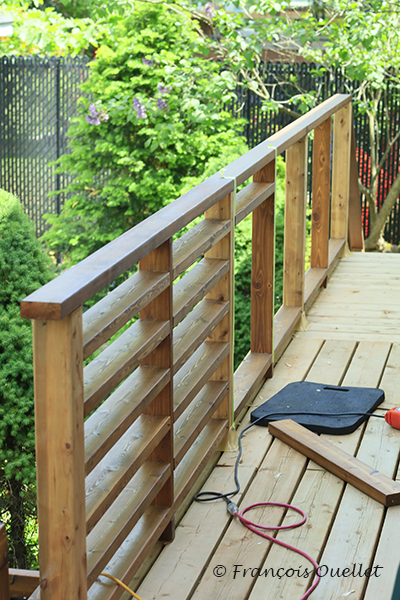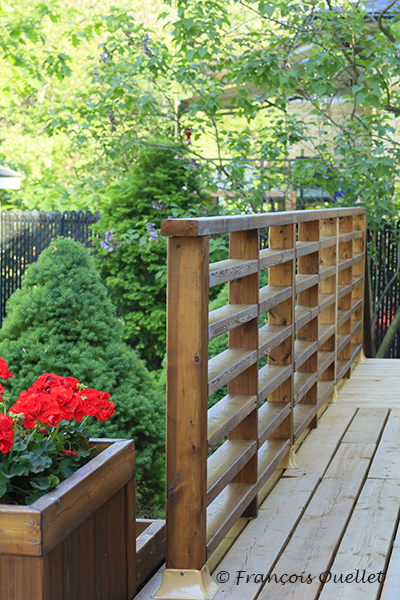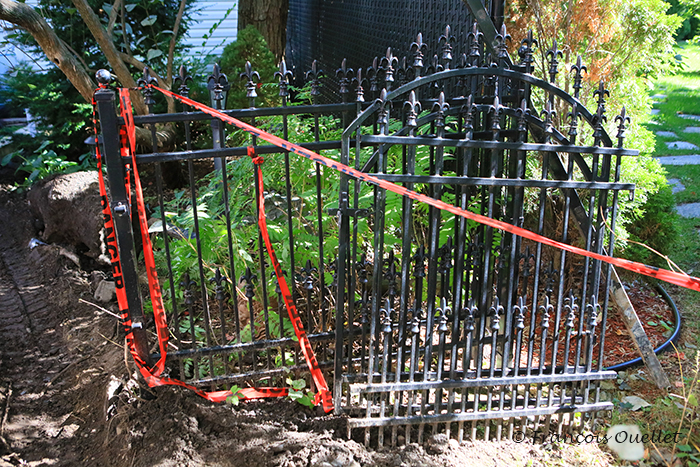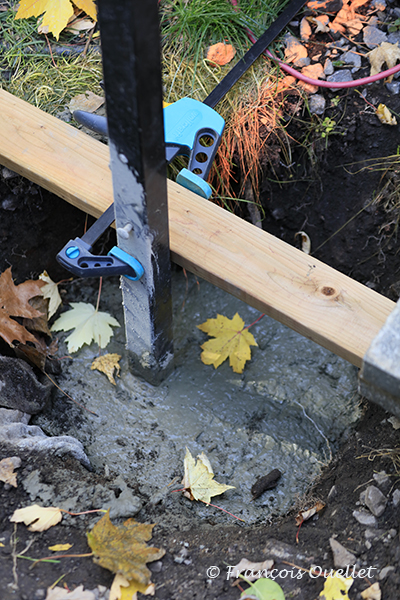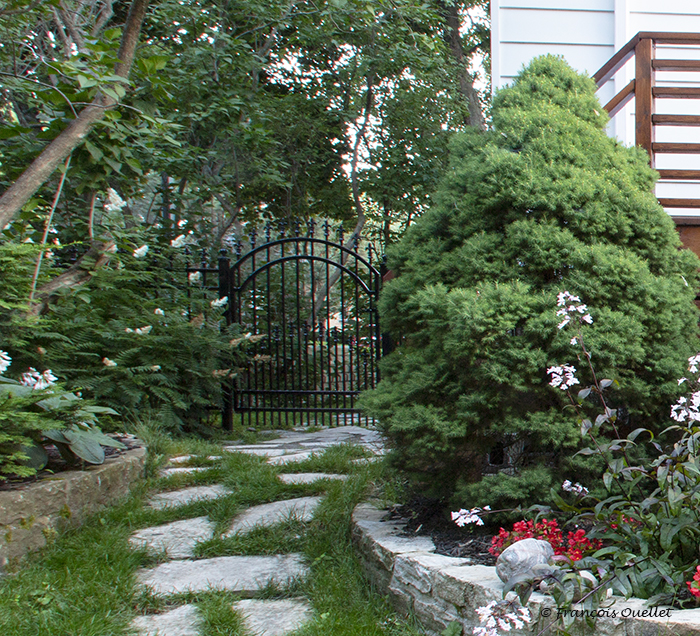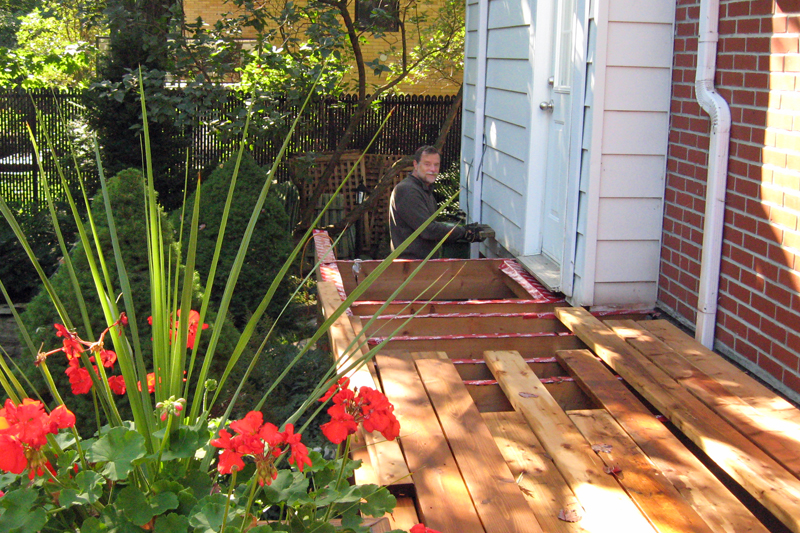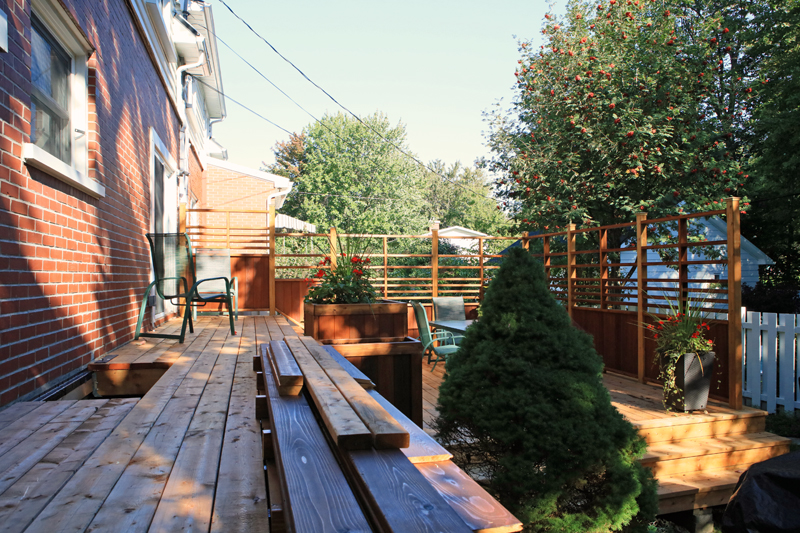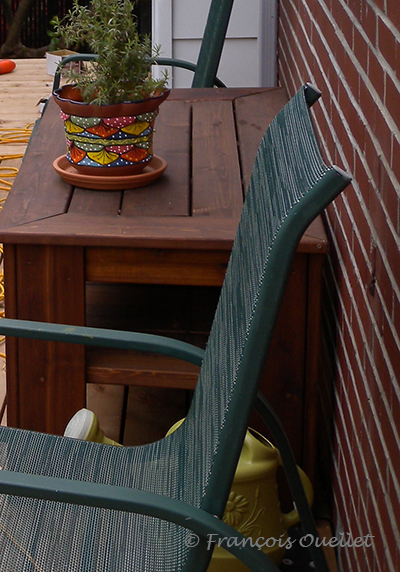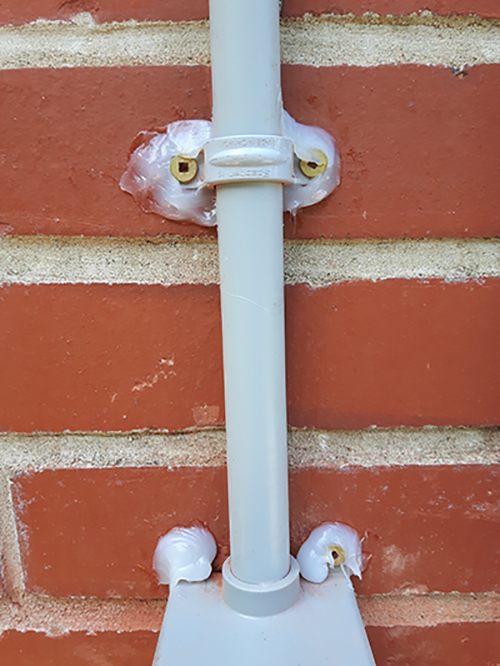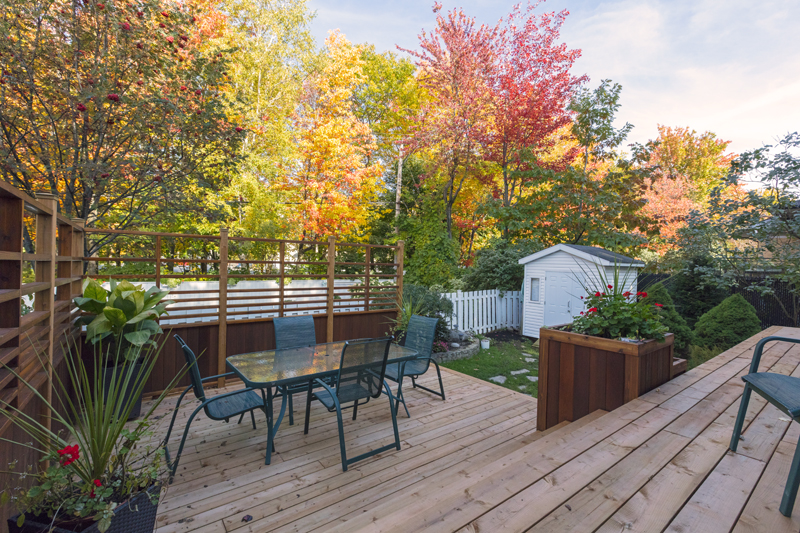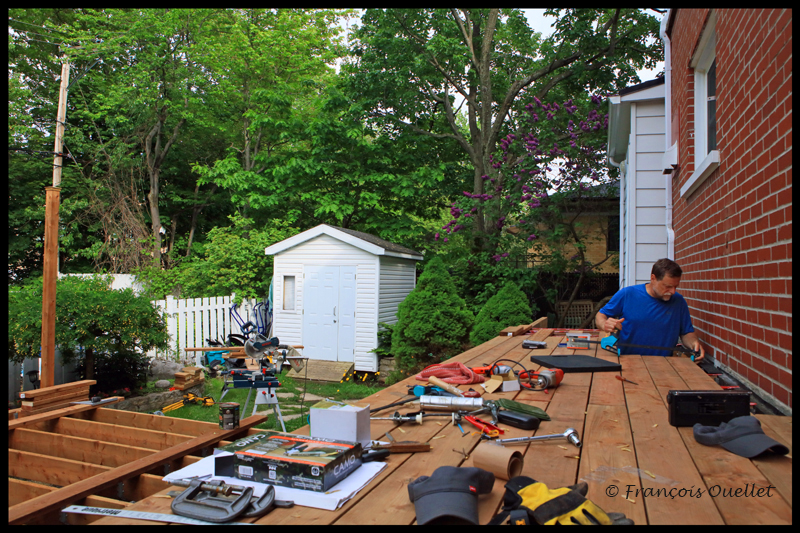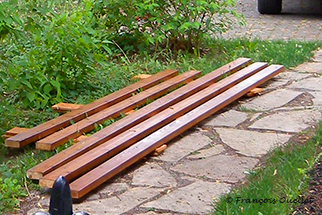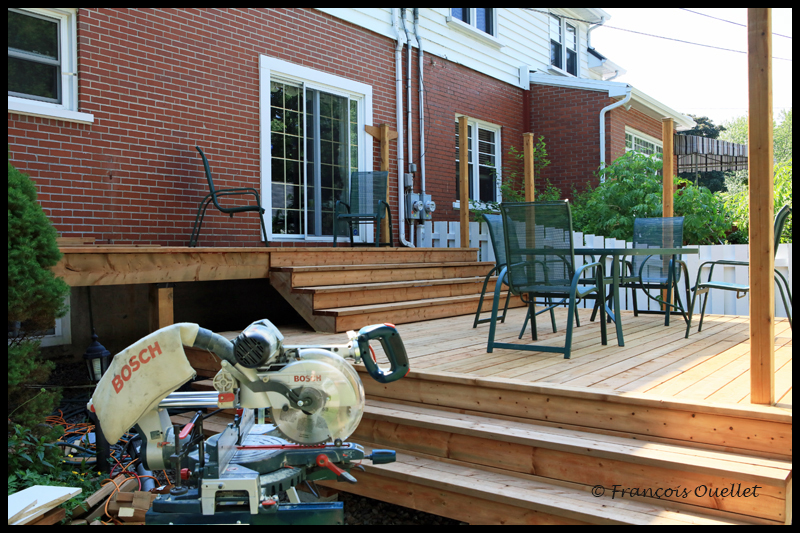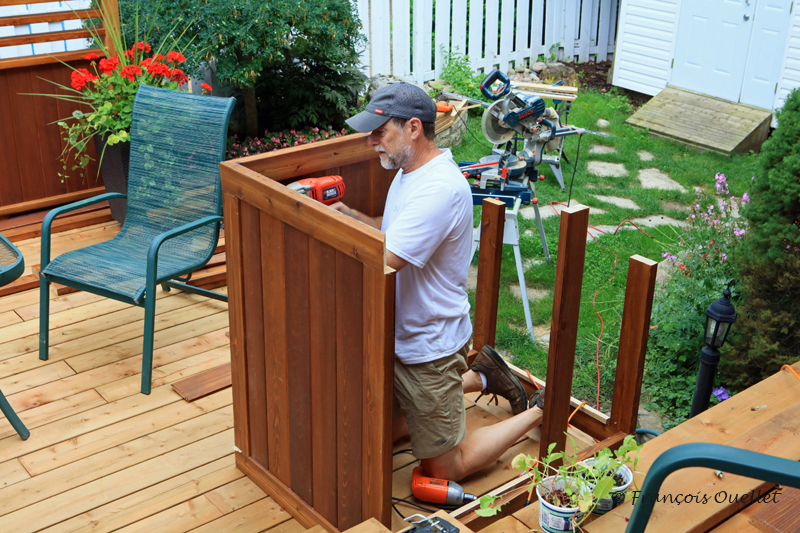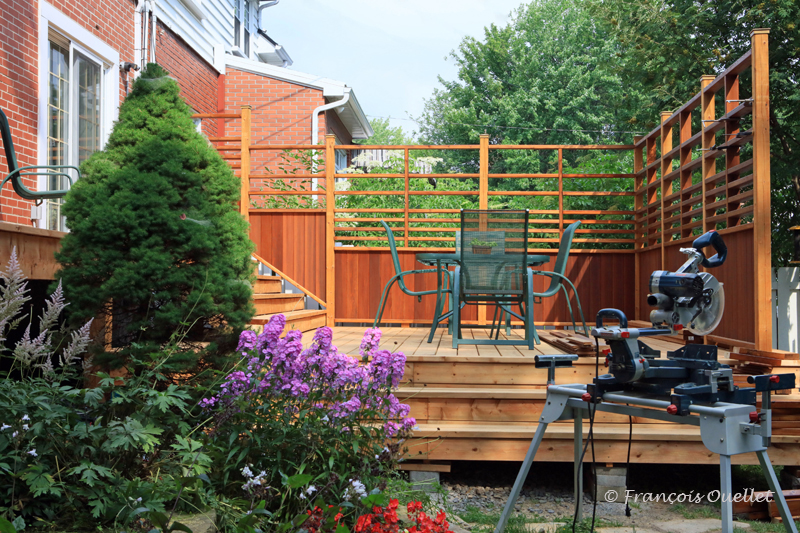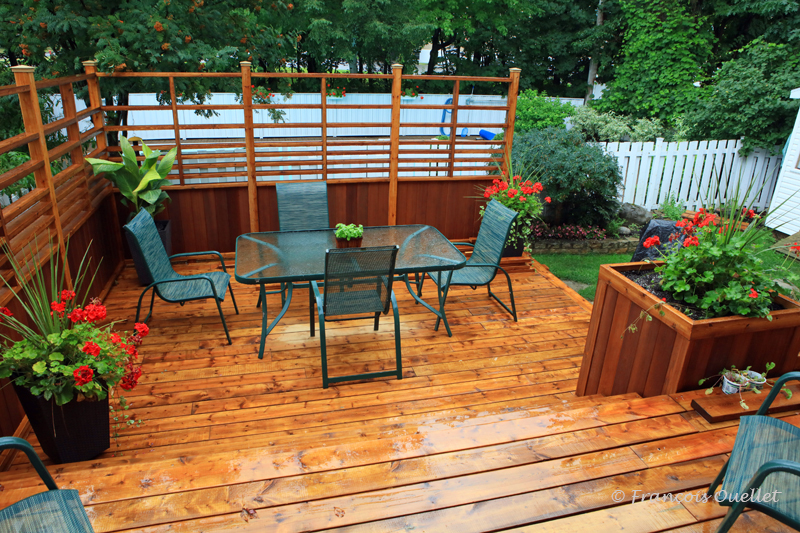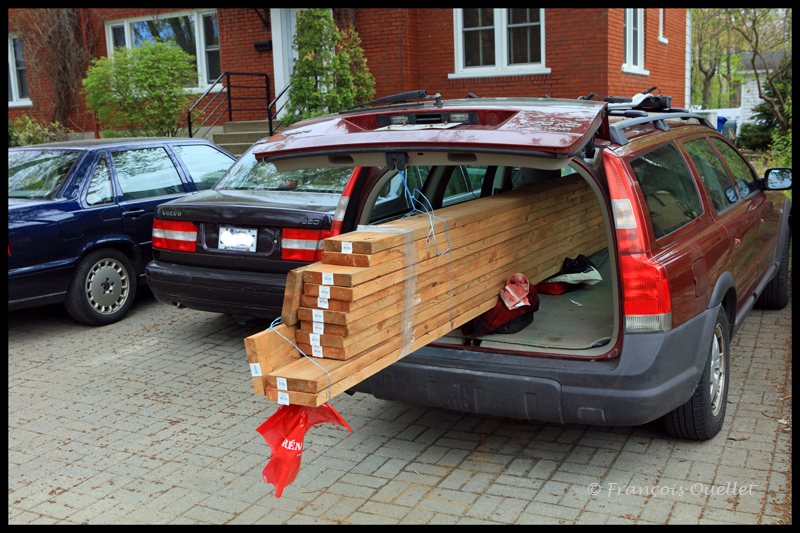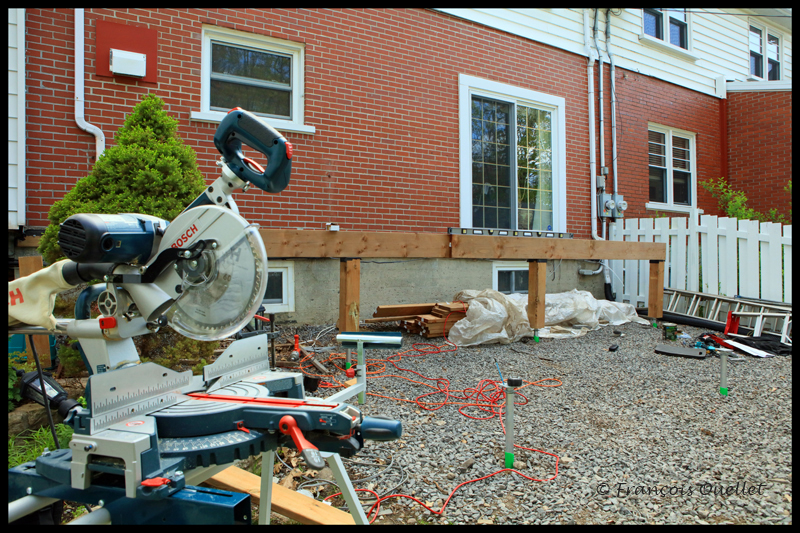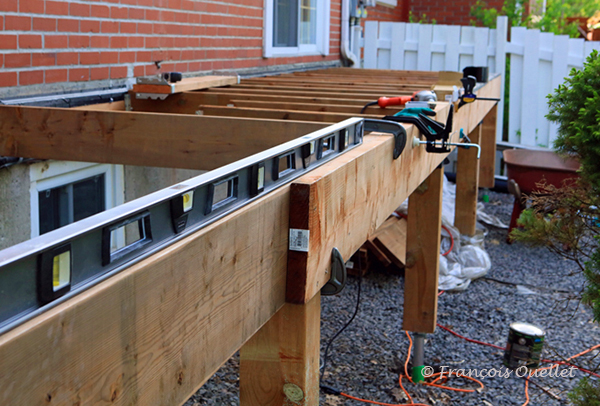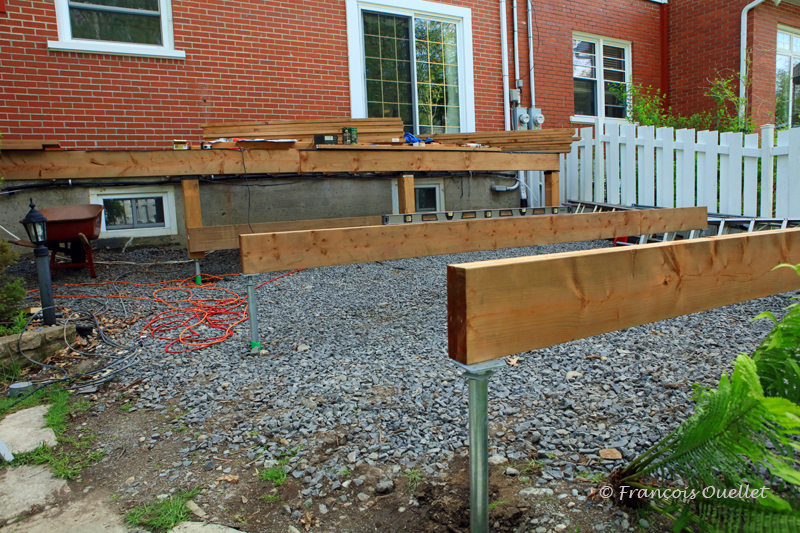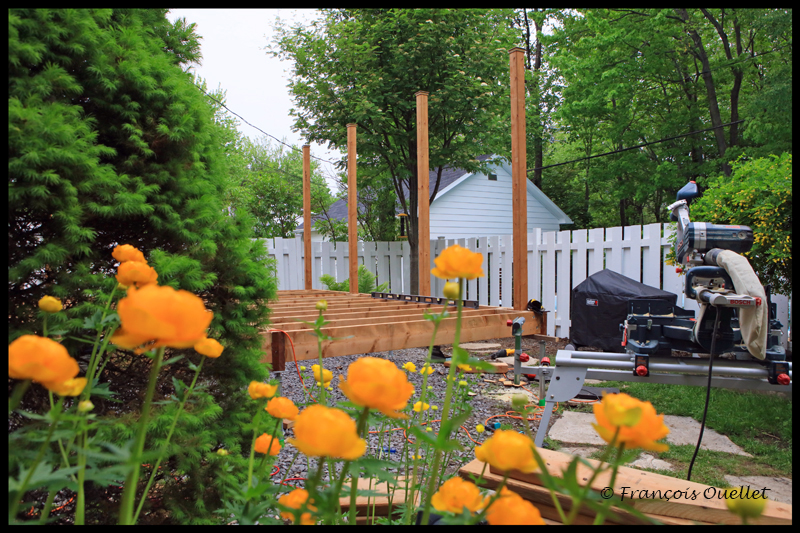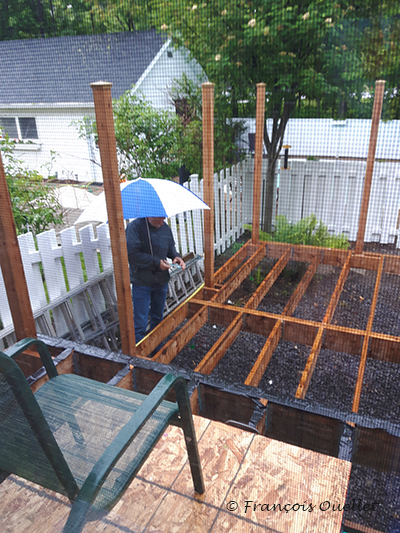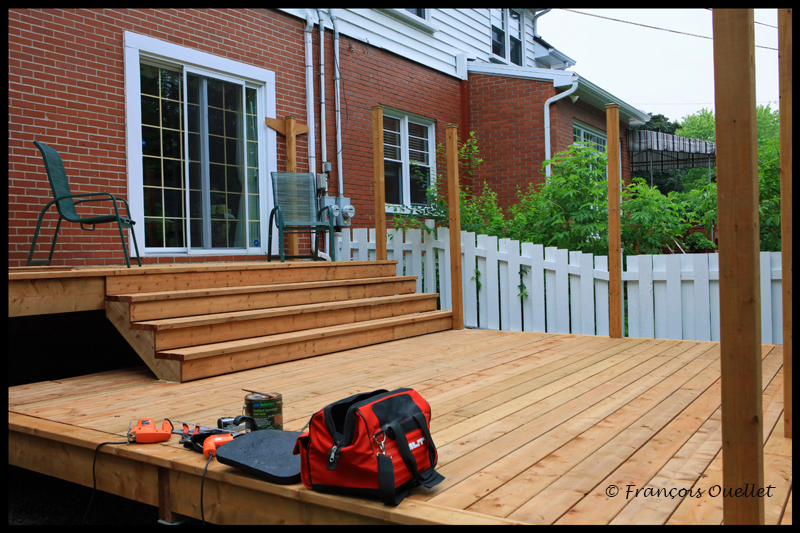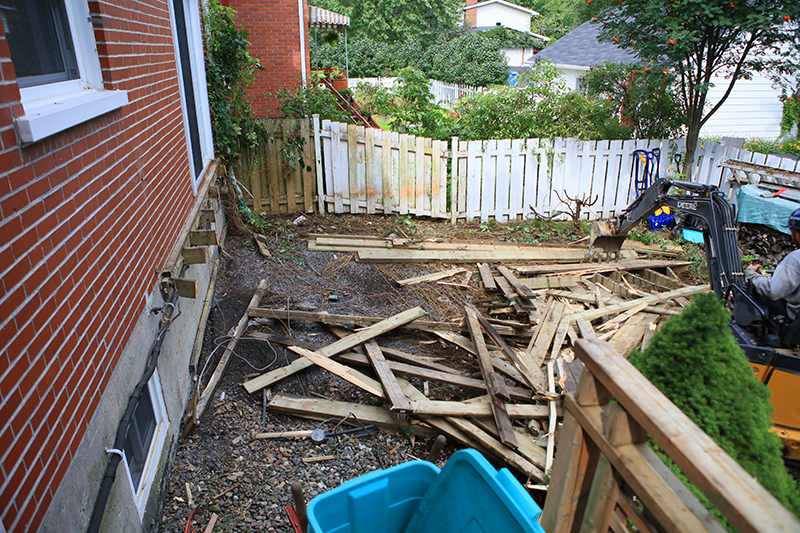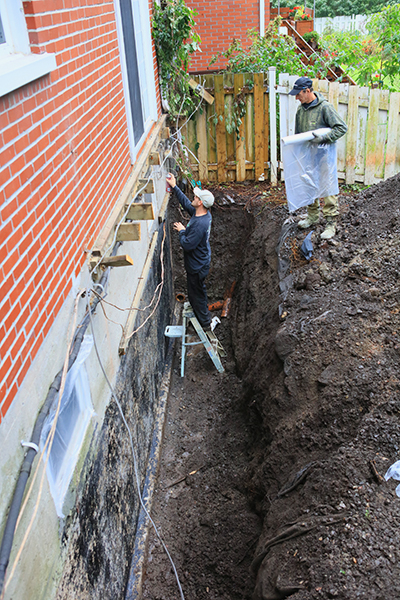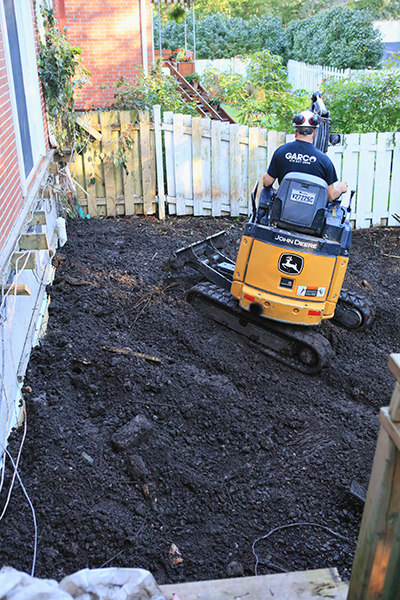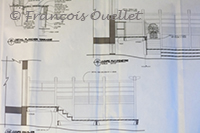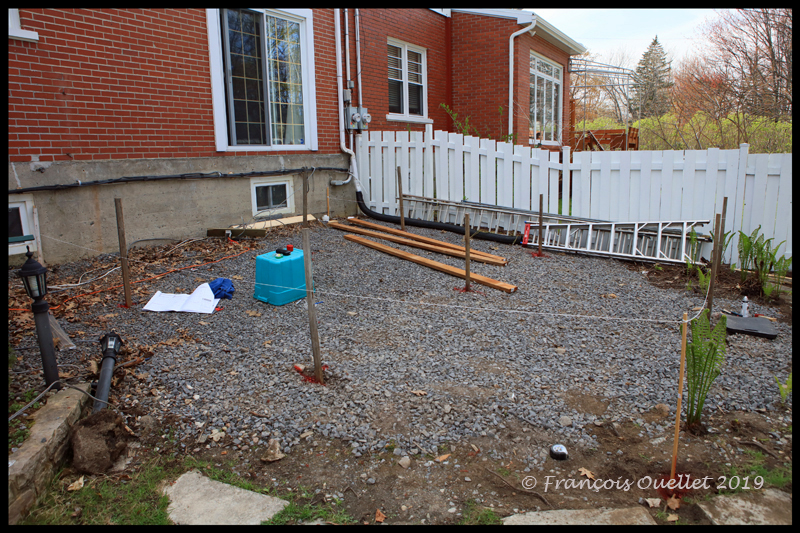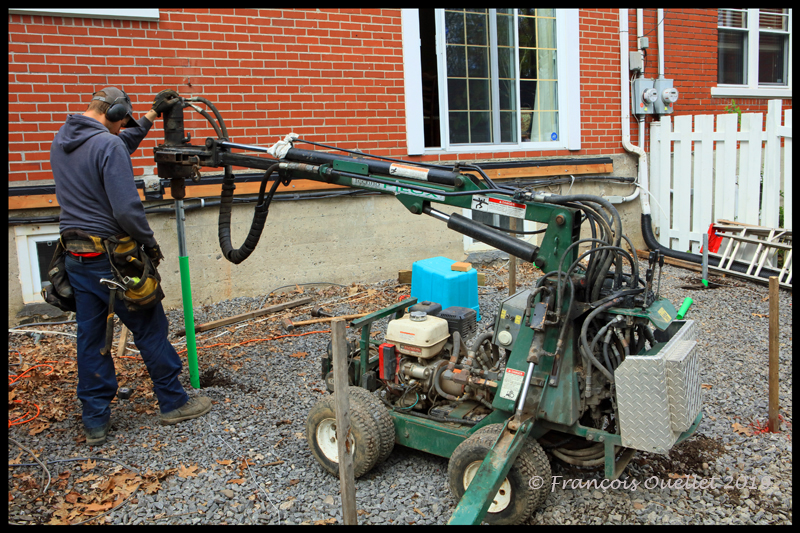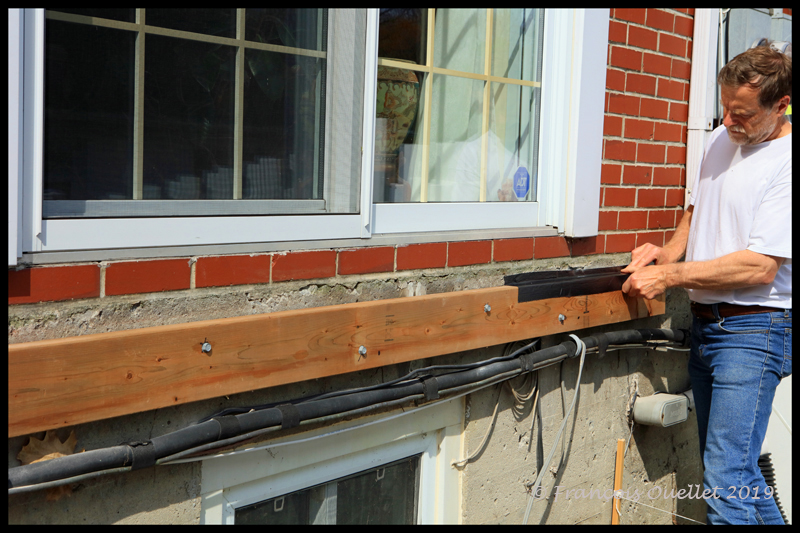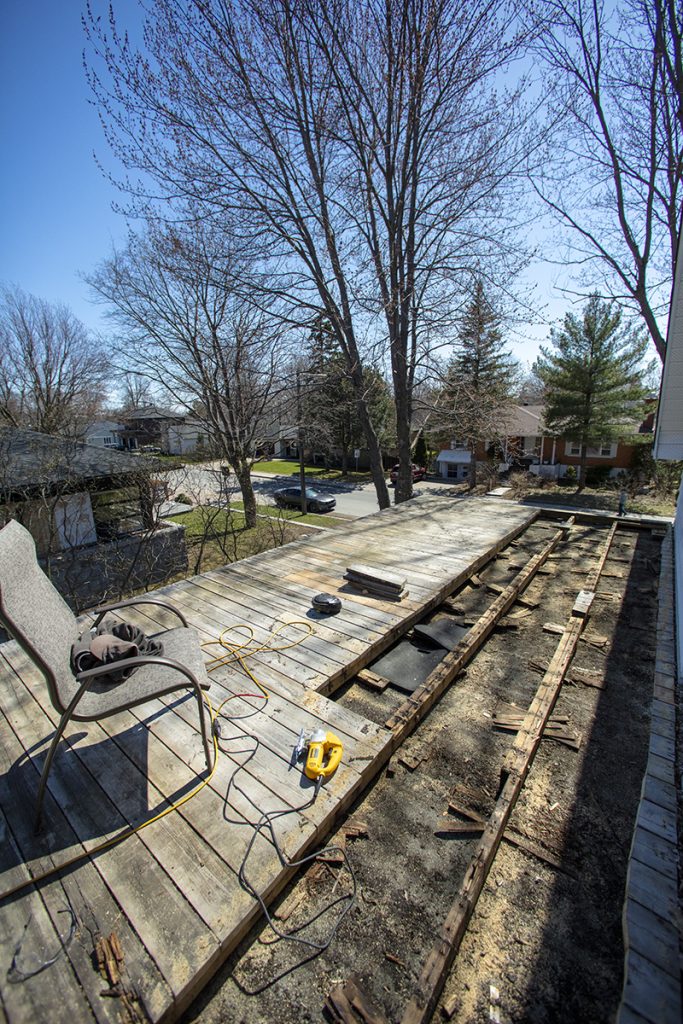
I redid the second-floor patio in April. By doing it alone, I saved $10,000. In my spare time, it took four weeks to demolish the old deck and build a new one. At the beginning of the project, there were no leaves in the trees, but a month later, in the last picture of this article, you can see the progress in the vegetation.
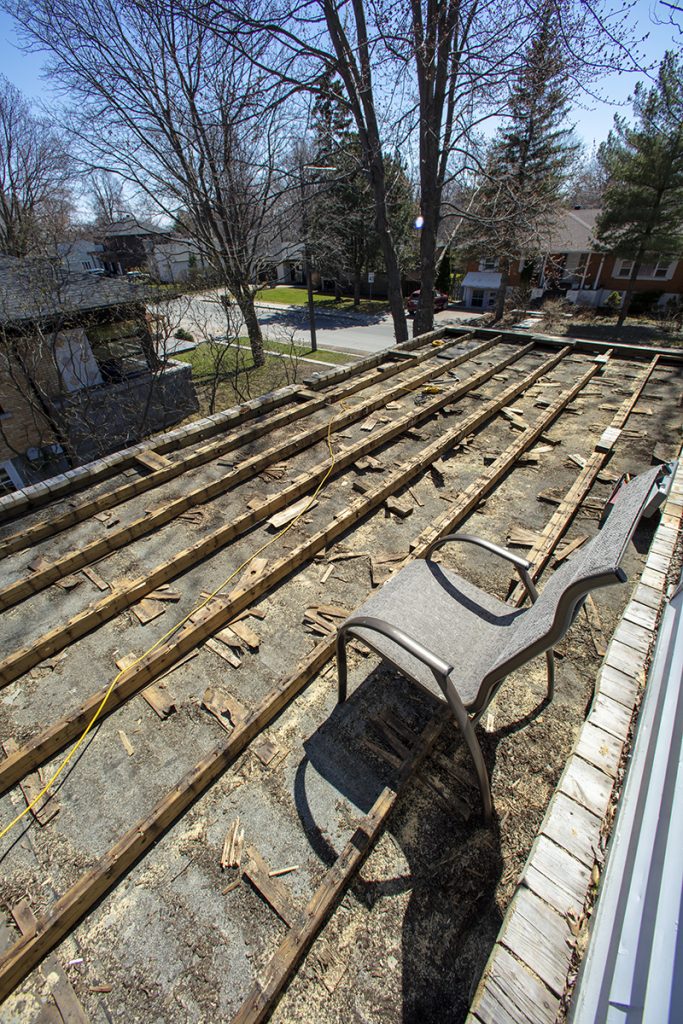
The first step is to remove the fence. The numbering of the panels will facilitate the reinstallation.
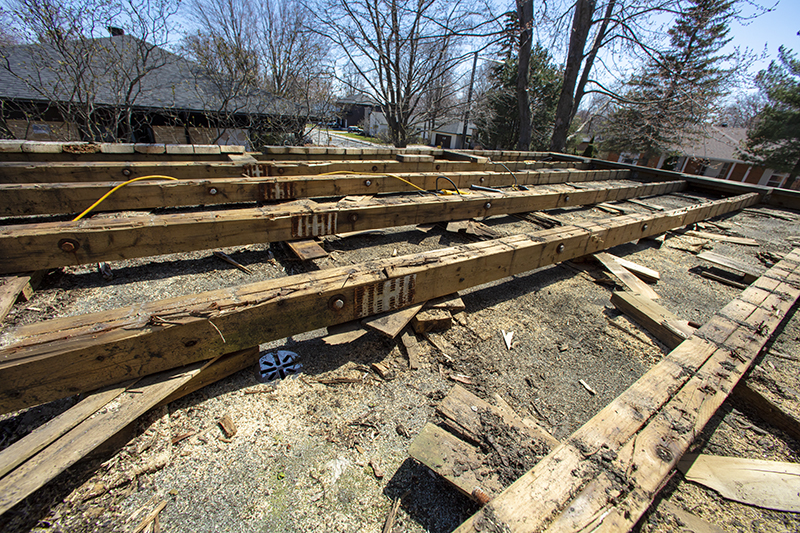
I also had to dismantle a swing, take down the existing patio set and other accessories. I then saw the old 2X6X12 boards in sections that could be easily handled by one person. Then I cut the floor supports into smaller pieces. All this leaves the second floor by air. Gravity takes care of the rest.
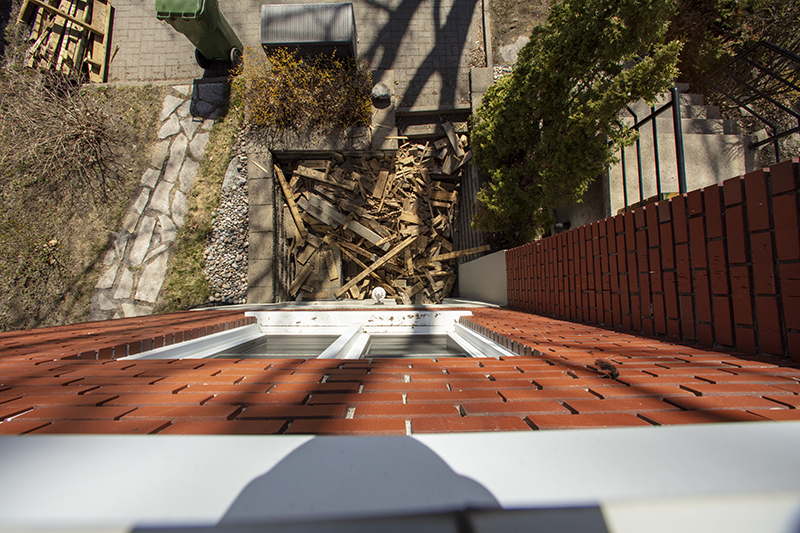
To avoid having to redo the patio for several decades, the best material is cedar rather than pine. It is necessarily more expensive to buy, but requires less maintenance and lasts much longer. The new floor supports must be built and installed putting cedar shingles here and there to ensure the stability of the new floor on a roof that is uneven, with a drain in its center.
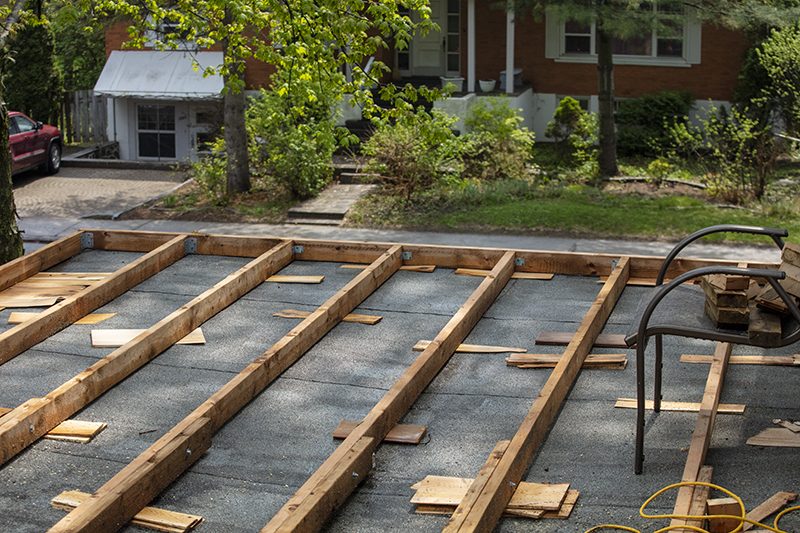
I had to argue a bit with the owner of the Spécibois store to get the right to choose each of the new 12 feet cedar boards. But eventually, they gave me permission to sort them out. Avoiding boards with defects makes it easier to line them up and screw them down.
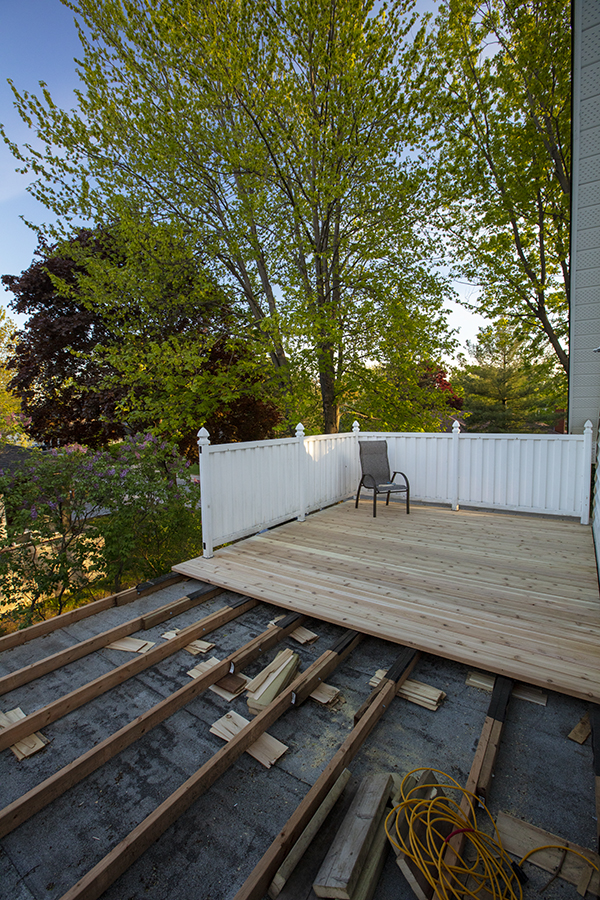
Now is the time to install the twelve-foot boards. The Camo system allows the boards to be screwed on the side, so there are no visible screws. I installed the fence sections as the work progressed. You can see that the trees now have leaves, a few weeks after the work began.
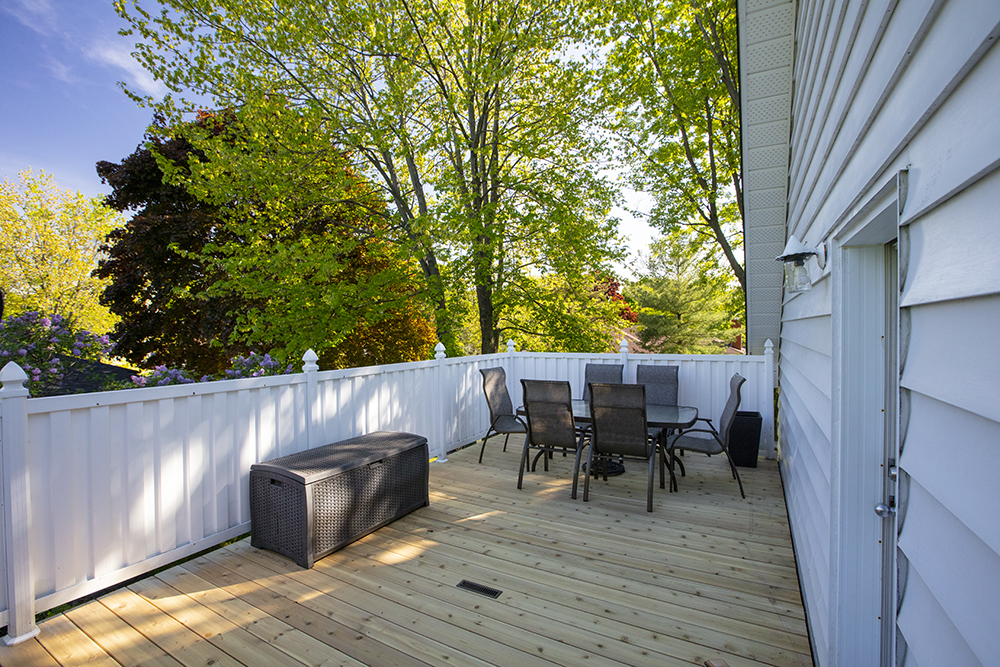
I created an access to the roof drain and brought back the patio set and reinstalled the swing set (not visible here). The result is a durable three hundred square foot floor that smells like cedar and, not least, savings of $10,000 when you do all the steps yourself.
Click on the link for more renovations on my blog.
